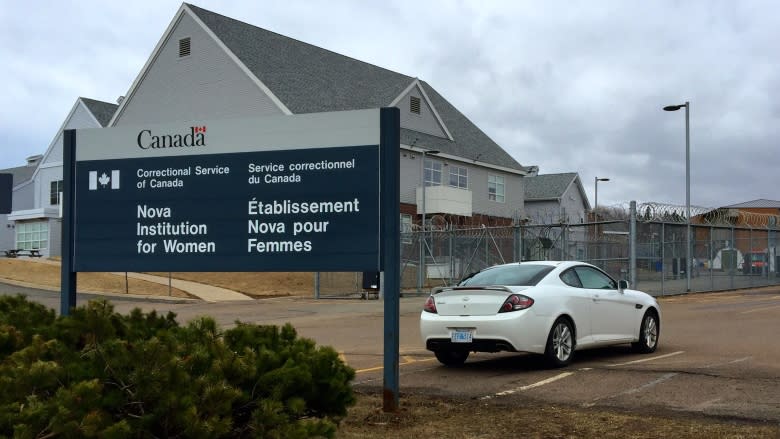Nova Institution for Women sees spike in self-injury incidents
Reported incidents of self-injury among female federal inmates in Nova Scotia have spiked in the last five years, according to information obtained by CBC News.
In 2011, there were no reported incidents of self injury at the Nova Institution for Women. That climbed to 56 incidents in 2012 when the prison's average population was 72. The following year there were 109 cases, even though the average population of the prison only increased by one.
Last year, 66 incidents were recorded.
Correctional Service of Canada classifies self-harm as a "hunger strike, overdose interrupted or self-inflicted injuries."
"The presence of a small number of individuals with complex mental health needs who engage in repeat self-injury incidents can explain partially this phenomenon," wrote spokeswoman Étienne Chiasson in an email to CBC.
"Neither the number of inmates housed at Nova, nor the number of staff at the institution have been identified as contributing factors in the events of self-injury."
Correctional Service of Canada says once workers become aware of a case of self-injury, the offender is assessed and treated.
If needed, Correctional Services can refer a patient to a psychiatrist or psychologist.
"The Nova Institution has a staffed intermediate mental health care unit equipped with quiet rooms and support staff experienced in mindfulness, self-soothing and distraction techniques useful in averting self-injury," wrote Chiasson.
Mental health care in the community
"It certainly disturbs me, unfortunately it doesn't surprise me," Kim Pate, executive director of the Canadian Association of Elizabeth Fry Societies, said when she heard about the number of incidents.
"With the opening of the branch of the Nova Scotia Hospital, we had hoped that we would see far fewer people being criminalized who had mental health issues."
There needs to be more community resources to help women with mental health problems before they end up in a prison setting, Pate said.
"I think it's important to remember that when Ashley Smith was in the prison system, she was not identified as a prisoner with mental health issues. It wasn't until after she died that people recognized what they were dealing with were mental health issues," said Pate.
"She was described as a behaviour problem. Many of the women are described that way."
Smith is the New Brunswick woman who died in her segregated prison cell at the Grand Valley Institution in Kitchener, Ont., in 2007. She had tied a piece of cloth around her neck while guards stood outside her cell door and watched.
More cases among female inmates than male
"The problem is the manner in which they're housed, mostly in segregation or segregated living conditions in maximum security. If they don't have mental health issues when they go in, the often develop them when they're in there," said Pate.
Suicide attempts are rare at the Nova Institution. The were no reported cases in 2010, 2011 and 2014. In 2012, there were three reported cases. In 2013, that number increased to seven incidents.
The number of reported self-injury incidents reported among male federal inmates pales in comparison to females.
According to Correctional Service Canada, there were eight reported incidents at the Springhill institution in 2010. That climbed to 21 incidents in 2014.
A 2010 Correctional Service Canada report on self-injury noted that "issues around offenders who self-harm are of growing concern within CSC."
The report noted women are proportionately more likely than male offenders to engage in self-injurious behaviours and self harm more than once. Male inmates tended to self-harm by slashing or overdosing, while female inmates showed higher use of ligatures or head-banging, the report said.
"Many women have experiences of abuse. There are many men who do, too, who go on to be incarcerated," said Pate.
"For women the results of that trauma often cause them to be more self-injurious than to harm other people. The horrible reality now is as resources have been cut in the community we're literally seeing more and more people being dumped in the street."
CBC News asked for the same information from provincial correctional facilities, but was told the "Department [of Justice] does not collect statistics on 'suicide attempts' and 'self-harm incidents.'"



